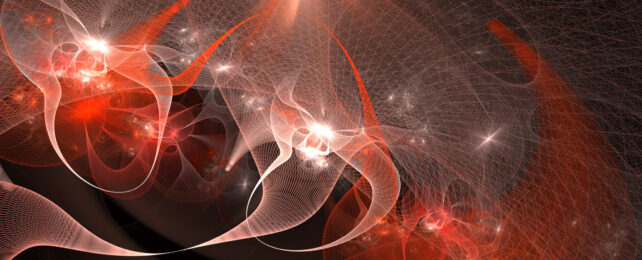Albert Einstein was one smart cookie; there's no doubt about it. But even he knew his general theory of relativity – the 21st century's answer to Newton's universal theory of gravity – wasn't perfect.
Like the second-hand car you bought using your first paycheck, it does the job for day-to-day errands. Push it too hard up a steep hill or park it near a quantum strip mall, and that engine shudders to a standstill.
Peoples' Friendship University of Russia astrophysics grad student Hamidreza Fazlollahi's solution is to dive under the hood and see which components aren't as essential as they seem.
By plucking out a law conserving a mathematical quality involving energy and momentum, he believes general relativity just might make it over a few more speed bumps.
Gravity describes the tendency for things with mass to come together. Whether it's colliding galaxies, a moon struggling against inertia in its pull towards a planet, or an apple falling to Earth from the top branches of a tree, models of gravity need to explain why masses attract.
Yet such a theory also needs to operate in a Universe where objects of identical charge repel, explain why atomic nuclei stick together with incredible force, or why neutrons spontaneously decay to form protons. It also needs to work still when masses become so dense or space-time so compact, light itself can no longer escape.
And frankly, as good as it is, general relativity just isn't up to the task.
"The problem of non-renormalizability of Einstein's gravity is well known. It has led to dozens of attempts to treat it as a low-energy theory," Fazlollahi says.
Renormalization is a magical sleight-of-hand used by theoretical physicists to make frustrating infinities in quantum fields disappear. When loops of reality seem to recede forever into the distance in a confusing fractal, pull a few of these techniques out of the bag, and your model is on solid ground once again.
General relativity doesn't make this easy. As such, the rolling fields of space-time it describes refuse to mesh with the sandy beaches of quantum mechanics, resulting in an immiscible system of physics requiring two theories of nature where one would make a lot more sense.
Fortunately, Einstein's formulation of general relativity was also based on a number of assumptions. He had good reasons for including them, but at the end of the day the Universe might simply have other ideas on whether they are warranted.
One of the more fundamental assumptions in general relativity is that the curving of space and time is consistent with energy and momentum being conserved. In other words, sailing along on an ocean of space-time from A to B shouldn't affect your energy or velocity unless there's a change in forces.
This assumption is all well and good in a flat, empty Universe. But the Universe dimples and curves, lush with galaxies and electrons and virtual particles popping in and out of existence.
In 1976, English physicist Peter Rastall came up with a subtly different model of gravity that suggested matter and the curvature of space and time were linked in a way that wasn't trivial, one that left wiggle room for the standard energy-momentum conservation law.
Forging a different path along a similar way of thinking, Fazlollahi looked to relativistic thermodynamics – the physics of energy exchange under rather extreme conditions – to find transformations of energy and momentum that are reminiscent of equations used in general relativity.
The result is a new way to describe the emergence of gravity from curving space-time, one that ditches some fundamental assumptions while remaining useful at things like explaining how the Universe expanded.
As good as it is, it's clear Einstein's brilliant idea is wrong on some level. There's no use in being overly conservative when the fate of everything is at hand.
This research was published in The European Physical Journal C.
